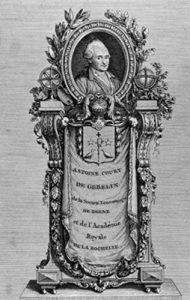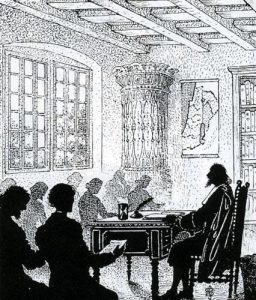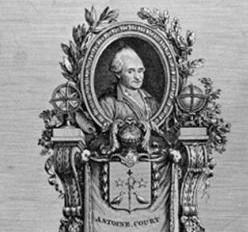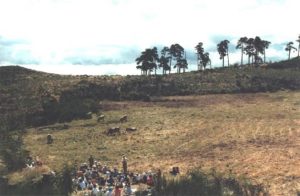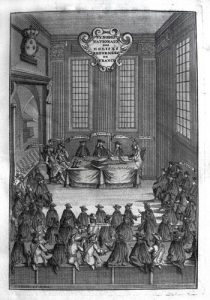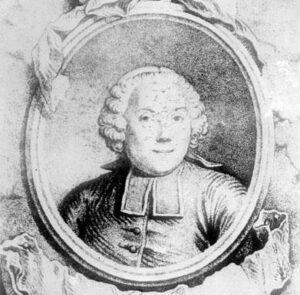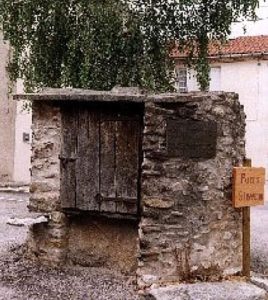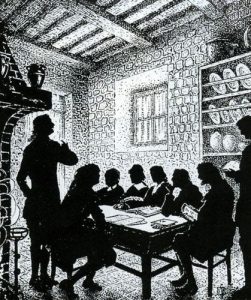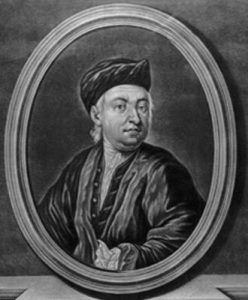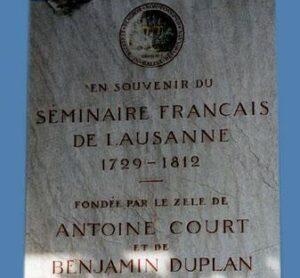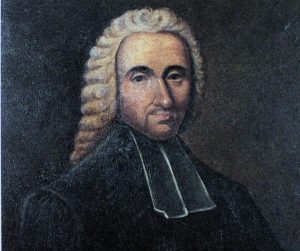"Civil tolerance"
The French government adopted a more tolerant attitude to Protestants as time went by, but this situation differed according to the regions, starting first in Languedoc, then in Dauphiné, Poitou and Saintonge. It was only in the 1780’s that this attitude reached Normandy.
There were still some cases of Protestants being forcibly baptised as Catholics, especially in the South-West.
From time to time Protestants were persecuted, pastors arrested and children abducted.
However, from 1760 onwards, several parliaments passed decrees recognizing the legitimacy of the children of “religionnaires”(i.e. protestants) and the term “concubines” ( i.e. protestants’ wives) no longer appeared so frequently in the registers of baptisms.
Nonetheless, the “non-Catholics” had to wait until the edict of tolerance in 1787 to be legally recognized.
The "officially secret" celebration of the protestant service was in actual fact taking place more and more often in public
During the period 1760-1787 the Desert Churches expanded and became better organized. But public religious services (such as was held in the Catholic Church at that time), could only be held in certain regions in France. Some of the Churches had not yet been integrated into the synodal system. Religious communities in big towns like Bordeaux, La Rochelle or Caen remained fairly independent. This is why it had been quite easy to organize provincial synods from an early stage, but more difficult to establish a national synod.
In Paris, protestant nationalities were allowed to celebrate a public service in their embassy chapel, which attracted many “religionnaires” in spite of police controls.
In the Midi, the Protestants continued to hold public assemblies in the “Desert” without much pretence at hiding their activities.
In the Southwest, more and more “houses of prayer” were built in the 1770’s, where Protestants gathered, and on the whole they were left alone by the authorities.
In town, aristocrats celebrated “society services”, while the “family service” was also popular, judging from the number of liturgies which were printed at that time for such use.
In 1778, there were 472 Churches, of which the majority were in the Midi compared to the Centre and the North of France. Little by little, pastors led a more settled life – it was not so necessary to travel from place to place nor live in secrecy. There were about a hundred pastors in 1770 and one hundred and eighty in 1788.
Court de Gebelin, the son of Antoine Court, decided to work for the Churches, who elected him deputy or “correspondent”, representing the French Churches abroad in protestant countries and also for the civil authorities.
The influence of the Enlightenment on Protestantism
On the sociological level, the type of membership of the Churches changed slightly : the gentry living in the towns joined the consistories, thus making the communities more bourgeois.
Moreover, in the Seminaire de Lausanne, pastors were studying, at a much more advanced level than before, theology, the classics and philosophy (which had undergone the influence of the Enlightenment).

